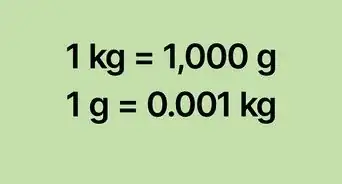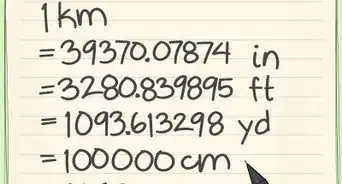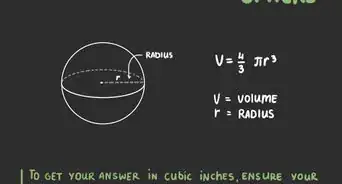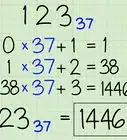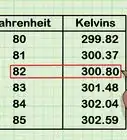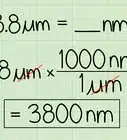This article was co-authored by Jake Adams. Jake Adams is an academic tutor and the owner of Simplifi EDU, a Santa Monica, California based online tutoring business offering learning resources and online tutors for academic subjects K-College, SAT & ACT prep, and college admissions applications. With over 14 years of professional tutoring experience, Jake is dedicated to providing his clients the very best online tutoring experience and access to a network of excellent undergraduate and graduate-level tutors from top colleges all over the nation. Jake holds a BS in International Business and Marketing from Pepperdine University.
This article has been viewed 670,397 times.
The ability to convert numbers, fractions and decimals into percentages is necessary knowledge for many industries, including engineering, economics and business. It is equally useful in everyday life – we all know to tip 15%, but how many of us can calculate that quickly? Likewise, the ability to describe quantity with a percentage helps us visualize and understand the amount.
Steps
Estimating Percentages Without a Calculator
-
1Use simple addition and subtraction to estimate a percentage quickly. This is most helpful when figuring out tips, or any other time you might not have a calculator available. Percentages can be added and subtracted as long as they are percentages of the same thing (ie, 5% of a 15lb turkey is cannot be added to 20% of a 5lb turkey). This trick makes it easy to guess simple percentages.[1]
- For example, say you want to leave a 20% tip with your lunch bill, which is $23.50. With a few simple tricks, you can get an estimate of a 20% tip with relative ease.
-
2Move the decimal one place to the left to find 10% instantly. This is the easiest way to get rough percentages without a calculator. To do it, simply slide the decimal over one place to the left. So 10% of $23.50 is $2.35. Remember, there is always a decimal place at the end of a number, so 25 could also be thought of as 25.00.
- 10% of 100 is 10.
- 10% if 35.59305 is 3.559305
- 10% of 6.2 is 0.62
Advertisement -
3Add and subtract your 10% estimation to get the percentage you want. For example, you need to tip 20% on your bill of $23.50, not just 10%. However, since 20% is simply twice as much as 10%, you can easily find the right amount by doubling what you found for 10%. Therefore:
- 10% of $23.50 = $2.35
- 20% = 10% + 10%
- 20% = $2.35 + $2.35
- A 20% tip on a $23.50 meal = $4.70
- This works because, at their core, percentages are fractions. 10% = 10/100ths. So, if you added up 10 10% amounts, you would eventually get 100%. If you add two 10% amounts you get 20%, and so on up.
-
4Continue manipulating your 10% to estimate other percentages. Once you understand these basics, you can use them to find even more percentages. For example, your waiter might have been rude and unhelpful, and you only want to tip them 15%. Break this down into smaller parts so that 15% = 10% + 5%. Since 5 is half of 10, you can find it easily by cutting your estimate in half. So 15% really equals $2.35 + $1.17, or a $3.52 tip. Other tricks include:
- To get 1% of something, move the decimal to the left 2 places. So 1% of 23.50 would equal .235.
- 25% of a number is always the number divided by 4.
- 50% of a number is always the number cut in half.
- 33% of a number is always the number divided by 3.[2]
Converting Fractions into Percentages
-
1Know that percentages are just fractions out of 100. All a percentage is a simple way to display a fraction whose bottom number (known as the denominator) is 100. A percentage tells you how many things you would have if you had 100 total. For example, say 25% of your apple harvest is always spoiled. That means for every 100 apples you harvest, 25 of them will be spoiled, or 25/100. Converting fractions allows you to find percentages in the real world, such as what percentage of apples is spoiled if you get 450 bad apples out of 2,500.
- If your fraction already has a denominator of 100, like 25/100, the top number is the percentage.
- 1% means that there is "1 per every 100."[3]
-
2Create a fraction from word problems. Sometimes you are not given the fraction, and you need to make it yourself. The hardest part here is figuring out which number goes on top, and which on bottom. The bottom number is always your "whole amount." It is your total apple harvest, the amount on the restaurant bill, the number of slices of pie, etc. This is the number you're getting a percentage of. The following examples show how to set up fractions:
- Jaime has 4,000 songs. If 500 of them are by the Grateful Dead, what percentage of his music is by the San Francisco jam legends?
- You want the percentage of Dead songs out of 4,000 total songs. The fraction would be 500/4,000.
- Sally puts $1,000 into a stock. 3 months later, she returns and sees that it has grown to $1,342. What was her percentage of growth?
- Because you are trying to find the percentage of 1,000 that grew bigger, your fractions is 1,342/1,000.
- Jaime has 4,000 songs. If 500 of them are by the Grateful Dead, what percentage of his music is by the San Francisco jam legends?
-
3Check if the denominator can be easily changed to 100 through multiplication or division. If you can "make" the bottom number 100, you can simply take the top number as your percentage, and the conversion is done. Remember, however, that anything you do to the bottom of a fraction needs to be done to the top as well. For example:
- Problem: Convert 3/25 to a percentage.
- 25 is easily turned into 100, since 4x25 = 100.
- Multiply both the top and bottom by 4 to rearrange the fraction into 12/100
- 4 x 3 = 12.
- 4 x 25 = 100.
- The top number is your percentage. Here 3/25 = 12/100 = 12%
-
4Divide the top number by the bottom if you cannot easily convert the fraction. If the bottom number is not easily converted to 100, like in the fraction 16/64, then divide the top number by the bottom. Here, 16 divided by 64 =.25
- This number is commonly a decimal, but it can be a larger number if the top of the fraction is bigger than the bottom.
-
5Multiply your answer by 100 to convert the fraction into a decimal. In the previous example 16/64 = .25. To finish converting 16/64 into a fraction, multiply .25 by 100 by moving the decimal over two places to the right. Therefore, 16/64 = 25%.
- This is how you know the percentage when the denominator is 100, since 12/100 multiplied by 100 equals 12.
- A decimal point represents, in essence, the percentage of "one." For each .1 you add you get closer to making "a single 1" (.9 + .1 = 1.0) This is why moving the decimal works to turn decimals into percentages, because your find how many smaller parts make up the whole "one" that you are studying, such as "one" harvest of 2,566 apples.
-
6Try another example to test your conversion skills. The recommended daily caloric intake is 2000 calories. You eat this much today, but then go out for cake and ice cream later and add an extra 1500 calories to your day. What percentage of the recommended daily calories did you eat today?
- Find your total calories.
- Here, it is 2000 + 1500, or 3500 calories.
- Create a fraction.
- Think of the "whole." 1 full days worth of calories is 2000. Therefore, you're looking for the percentage of 2000 calories you ate. Your fraction would be 3500/2000.
- Divide your total calories (3500) by the recommended amount of calories (2000).
- 3500 ÷ 2000 = 1.75
- Multiply this number by 100 to get the percentage.
- 1.75 x 100 = 175
- You ate 175% of the recommended daily calories.[4]
- Find your total calories.
Converting Percentages to Back to Amounts
-
1Know that you cannot use percentages to do any meaningful math. The number 25% is mostly shorthand -- an easy way for people to compare two numbers, but it cannot be used to do much. For example, saying that 13% of your 2,566 apples are spoiled does not tell you exactly how many of them went bad, it just says that 13 out of every 100 apples is no good. To find the exact number of bad apples, you'll need to convert everything back.
-
2Remove the % sign and shift the decimal two places to the left. This conversion will give you a number, usually a decimal, that can be used to do your math. For example, if 13% of your apples went bad, you'd end up with .13 here.
- Moving the decimal 2 places to the left is the same thing as dividing by 100.
-
3Multiply the decimal by your total amount. Here, you're looking for 13% of 2,566 apples. To get it, simply multiply .13 times 2,566. The resulting number is exactly how many apples went bad, roughly 333.58.
-
4Reverse this equation to check your answer. To make sure you did the math right, divide your number of apples by .13. Your final answer should be 2,566. This is also how you find how many total objects you have based on a percentage. For example:
- Jimmy has 20% of all the marbles in class. He has 10 marbles. How many marbles does the class have in total?
- 20% → .20
- 10 divided by .20 = 50.
- The class has 50 marbles total.[5]
- Jimmy has 20% of all the marbles in class. He has 10 marbles. How many marbles does the class have in total?
-
5Use examples to practice. You find a blouse that you love for $50, but it is on sale today, 15% off. How much will the blouse cost, total?
- Convert 15% into a decimal.
- 15% → .15, or 15/100.
- Multiply this decimal by $50.
- .15 times 50 = $7.50.
- Subtract the discount from the initial price.
- $50 - $7.50 = $42.50.
- You can buy the blouse for $42.50.
- Convert 15% into a decimal.
Community Q&A
-
QuestionHow do I find 102,640 of 134,850 as a percentage?
 Community Answer102,640 divided by 134,850 = 0.7611. To convert to a percentage, multiply 0.7611 times 100 = 76.11%.
Community Answer102,640 divided by 134,850 = 0.7611. To convert to a percentage, multiply 0.7611 times 100 = 76.11%. -
Question3.5% is equivalent of 0.035, how can I convert it into a fraction?
 DonaganTop Answerer3.5% equals 3.5 / 100, which equals 35 / 1000. This reduces to 7/200.
DonaganTop Answerer3.5% equals 3.5 / 100, which equals 35 / 1000. This reduces to 7/200. -
QuestionHow would I convert a number of people into a percentage?
 Community AnswerOne number cannot be converted into a percentage. A percentage is of "something," hence you need another number. For example the number of people who voted out of all people who could have voted is the percentage of people taking part in democratic decision making.
Community AnswerOne number cannot be converted into a percentage. A percentage is of "something," hence you need another number. For example the number of people who voted out of all people who could have voted is the percentage of people taking part in democratic decision making.
References
About This Article
To convert a fraction into a percentage, first check if the denominator can be easily changed to 100 through multiplication or division. If you can not easily convert the fraction, divide the top number by the bottom, then multiply the answer by 100 to get the percentage. If you want to learn how to convert your percentage back into a number to check your math, keep reading!
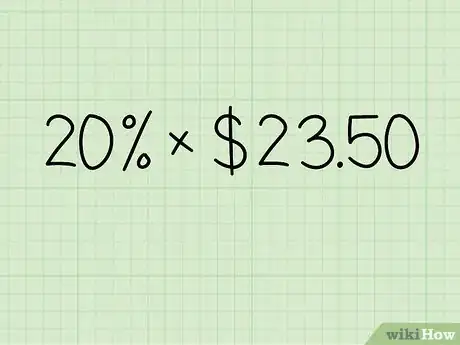
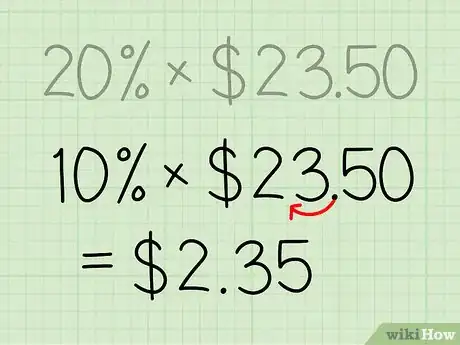
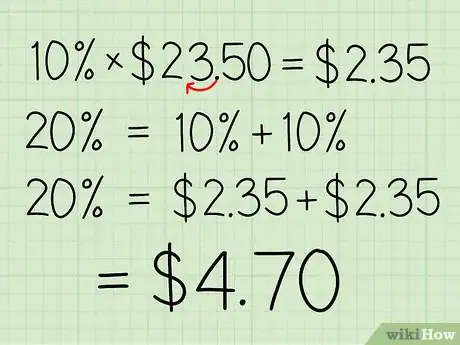
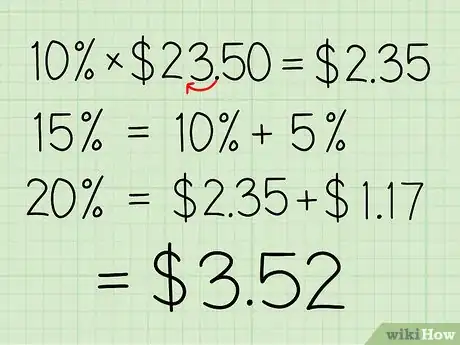


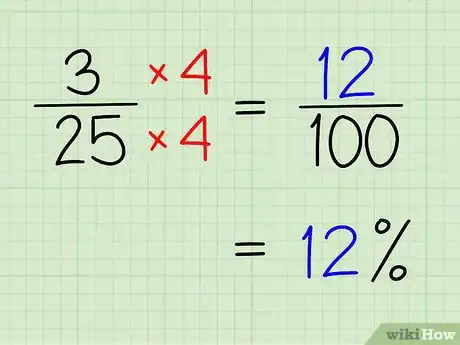
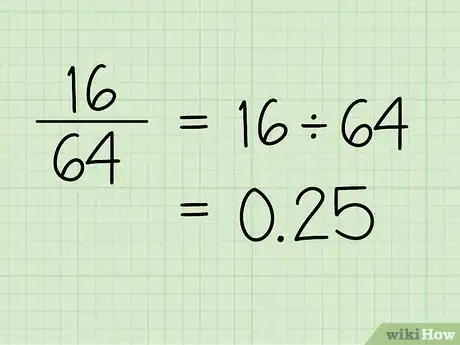
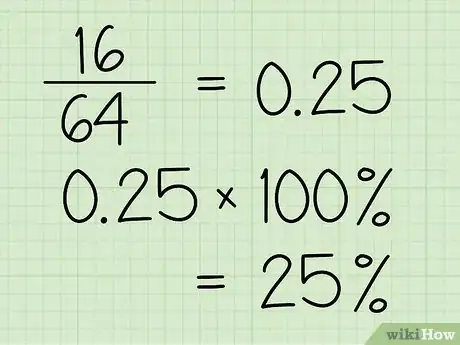
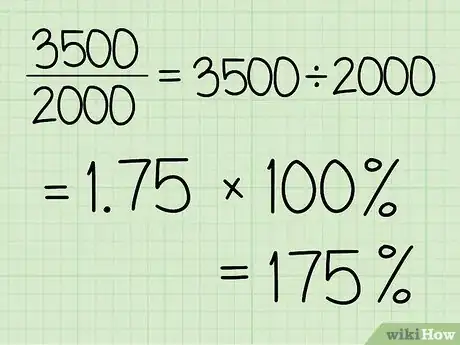



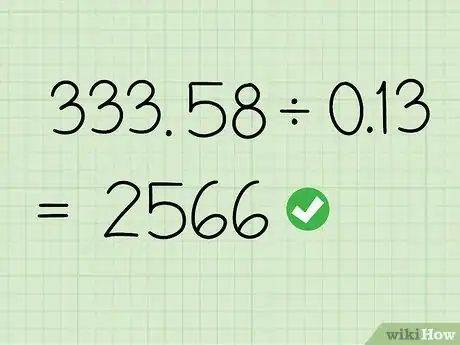
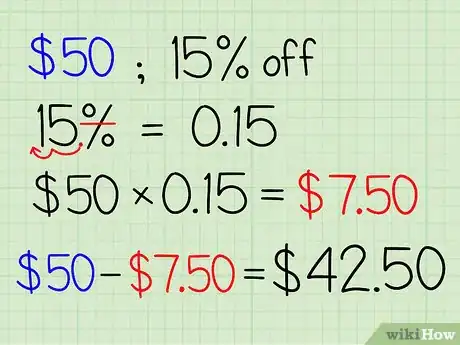

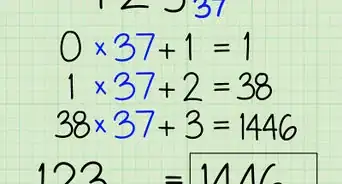
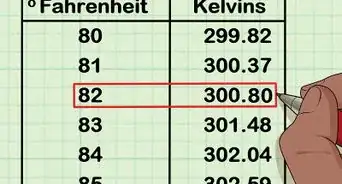
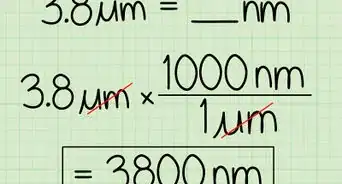
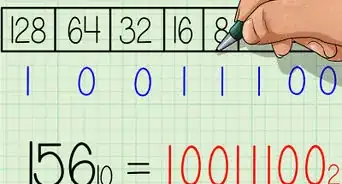
-to-Grams-(g)-Step-8-Version-5.webp)
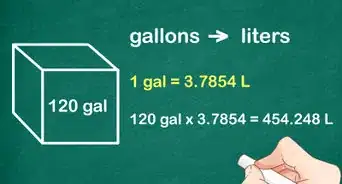
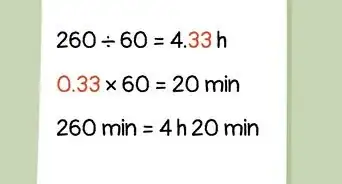
-to-Fahrenheit-(°F)-Step-6-Version-2.webp)
